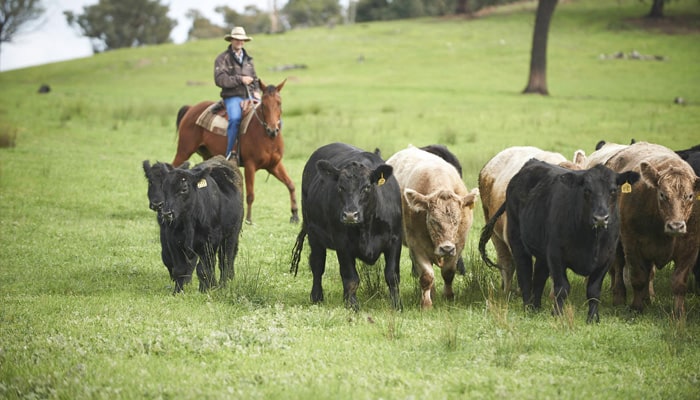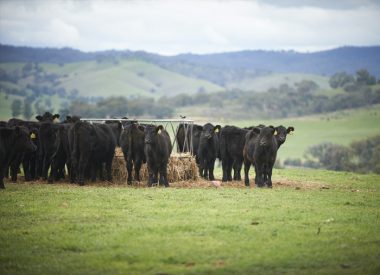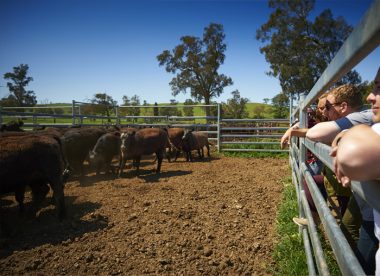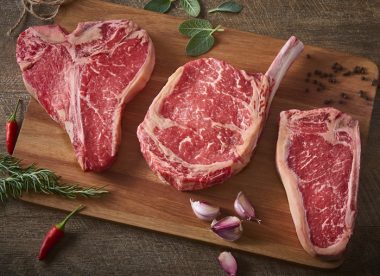Grain-Fed, Grass-Fed, and Organic Meats
Want to be supplied by the best? Make an enquiry

In the food industry, there always seems to be a new study or fact to consider; that food made one way or raised another is better for your or better in flavour.
One of these such debates falls around the difference between grain-fed and grass-fed meat. As the agriculture industry develops and innovates, things will continue to adjust accordingly but the basics are the same.
There are a few key things to understand about the difference between grain-fed, grass-fed and organic meats.
The Basics
In the simplest form, grain-fed beef is finished for a set period on grain. Grass-fed animals are fed the majority of their life in pastures, however, when unforeseen circumstances prevent them from being able to pasture feed, they may be given supplemental feed, but the diet must replicate their natural feeding environment as closely as possible.
Therefore, you’d assume grass-fed is fairly close to organic, right? You’re not wrong, but there’s a bit more to it. To be certified organic in Australia, farmers must prove their farms and feed are completely free of pesticides and hormones, and have been for the past three years, as well as that their animals are not injected with hormone growth promotants (HGP) or antibiotics.
This means grass-fed beef may be organic, but isn’t necessarily, and while grain-fed beef isn’t naturally raised, technically the feed and farm it is raised on, could be organic.

What About Flavour?
Sustainability and flavour are probably the two biggest topics in discussion when it comes to grain-fed versus grass-fed. First of all, one is not better than the other, each have unique aspects and are beneficial in their own right.
When you think of rich, buttery flavoured beef, it’s of the grain-fed variety. Wagyu beef is always grain-fed. Grain diets provide more nutrients to the animal, resulting in larger animals carrying more fat in their muscles. This results in high intramuscular fat, or marbling. Super premium cuts of beef, such as the 2GR Full-Blood Wagyu supplied at Haverick Meats, have extremely high marble scores (ours is 9+) and must be finished on grain in order to achieve this.
Most classify grass-fed beef as having a more nuanced and complex flavour. Overall, grass-fed beef is considered less consistent in flavour. It makes sense, considering there would be a range of factors going into the feeding of the animals. No two pastures are exactly the same, and factors such as the climate, weather changes from season-to-season (and year-to-year) and a whole host of others must be taken into account.

What to Choose?
Ultimately, consider that the majority of farmers genuinely care about the quality of the products they’re offering and will most likely raise their livestock in the best possible way for the desired outcome. The use of HGPs and antibiotics is becoming less and less common, therefore always choosing organic meat as a way to avoid ingesting harmful chemicals, is becoming less of a necessity. With so much to consider in the cost of getting certification seals, it’s not always the most cost-effective option for farmers, even if their practices are as close to organic as possible.
Instead, consider getting to know your provider and their producers and farmers will allow you to have a clear understanding of the practices and processes in place and ensure you’re getting the best quality product.
Choosing which type of beef to serve really comes down to what you’re trying to achieve. If maintaining consistency in flavour and providing a richer meat to your patrons is key, then grain-fed beef will deliver. If you’re a little more flexible or focused on natural processes, then choose grass-fed. A mix of both allows you to offer the largest range of dishes and ensures you’re better able to complement different produce and cooking styles.

